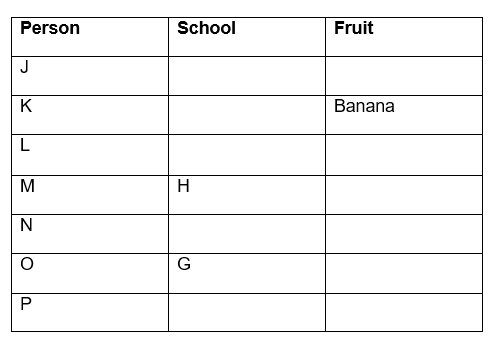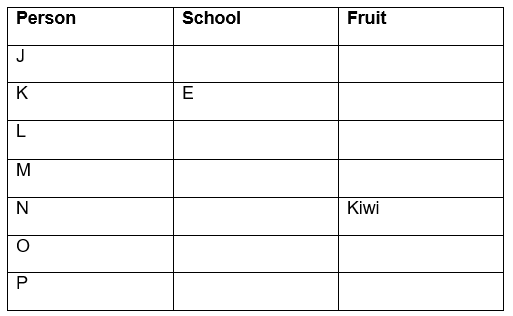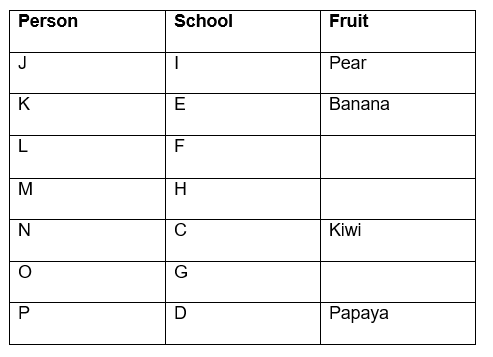Start learning 50% faster. Sign in now
From statement I alone, M studies in school H. K likes Banana. The one, who studies in school D likes Papaya. O studies in school G. N does not study in school F. We get: 
So, from statement I alone, we cannot answer the above question. So, data given in statement I alone is not sufficient to answer the question.
From statement II alone, Neither J nor L studies in school D. N likes Kiwi. K studies in school E. The one, who studies in school I likes Pear. L does not study in school I. We get: 
So, from statement II alone, we cannot answer the above question. So, data given in statement II alone is not sufficient to answer the question.
From statement I and II together, we get:  So, from statement I and II together we get N studies in school C.
So, from statement I and II together we get N studies in school C.
The Person who likes Maaza in the row arrangement sits which of the following place in the circular arrangement?
Six friends, P, Q, R, S, T and U, are sitting around a circular table, facing the centre of the table. P is second to right of S. Q is sitting to the im...
How many persons are sitting between X and P when counted to the right of X?
How many person sit between tallest person and shortest person?
Seven persons, P, Q, R, S, T, U and V sit in a linear row and face in the north direction, but not necessarily in the same order. Two persons sit betwee...
Which of the following Colour is liked by G?
Six persons R, S, T, U, V, and W are sitting around a circular table facing towards the center of the table but not necessarily in the same order. S do...
Which of the following statements is/are true?
Who sits second right of I?
N likes who among the following cities?